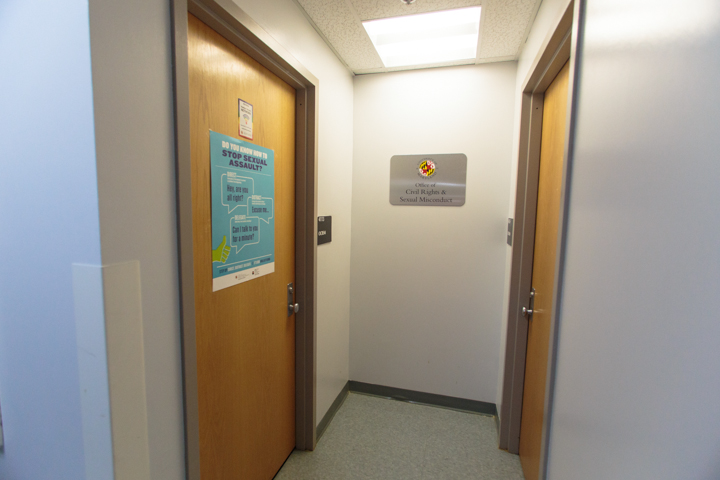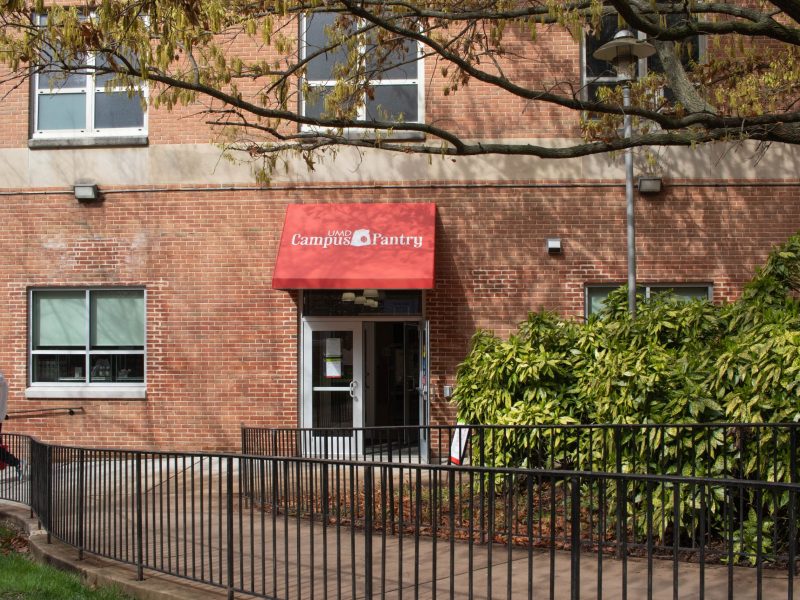When the University of Maryland Office of Civil Rights & Sexual Misconduct opened in 2014, it consisted of one person: current Director Catherine Carroll.
Since then, the office has expanded to include three special investigators, a training manager and an administrative coordinator, outgrowing the space it occupied in Reckord Armory. Since the start of the semester, the office has been housed in a new location in Susquehanna Hall.
In addition to offering expanded office space, the new location brings increased accessibility, as it includes elevator access, and more privacy.
“Our old space, we were working in very close quarters, and we need privacy for the work that we’re doing,” Carroll said. “We couldn’t stay there and maintain the integrity of the work we’re doing.”
The new offices are located along a corridor, unlike the Armory’s suite-style arrangement. While the new setup is “not as cozy,” Carroll said, it is bigger and allows for private interviews, conversations and investigations.
Facilities Management officials told Carroll that the office would likely be housed in Susquehanna until around May 2017, she said. She added that she hopes the permanent location, which has yet to be officially announced, will be centrally located on the campus for the ease of students and to cut down on travel time.
University President Wallace Loh said he was impressed with the speed of the office’s relocation, despite a wait time of several months, and described space at the university as “at a premium.”
“The Title IX office is a very high priority for us, clearly,” he said. “The university as a whole is below state standards; we have academic departments, some of them, operating out of closets.”
In fall 2014, Facilities Management officials identified a space deficit of almost 1.8 million square feet based on space guidelines from the state of Maryland for higher education facilities, said Brenda Testa, director of the Department of Facilities Planning.
And in a 10-year projection, Testa said, that number is expected to increase to a deficit of more than 2 million square feet.
“We generally do not have enough space on campus,” Testa said. “We also have, generally, a lot of older buildings that have need for renovations. A large percentage of our physical plan is awaiting money to do renovations.”
In Loh’s Five-Year Report and Reflections, released Thursday, he identified the need for building maintenance as a present risk for the university. He estimated that deferred maintenance costs totaled $900 million and cited a budget of about $20 million annually for renovations.
“Under the oversight of the VP for Administration, the campus is beautiful and the grounds are well-maintained. But most buildings are over 50 years old,” he wrote in the report. “A solution is for the state to set aside more funds for major renovations and for UMD to be allowed to use strategically its fund balance for this purpose.”
Before moving into Susquehanna Hall, the Office of Civil Rights & Sexual Misconduct had to wait for the space’s occupants, the American studies department, to move into newly renovated Tawes Hall — part of a project that cost $15.9 million.
“The thing about space on campus is that it’s sort of like a chess game,” Carroll said. “We had to wait for American studies to move out, and their new location was being renovated. … There are challenges in identifying space, definitely. We’re just happy to have the privacy and accessibility we so badly needed.”



